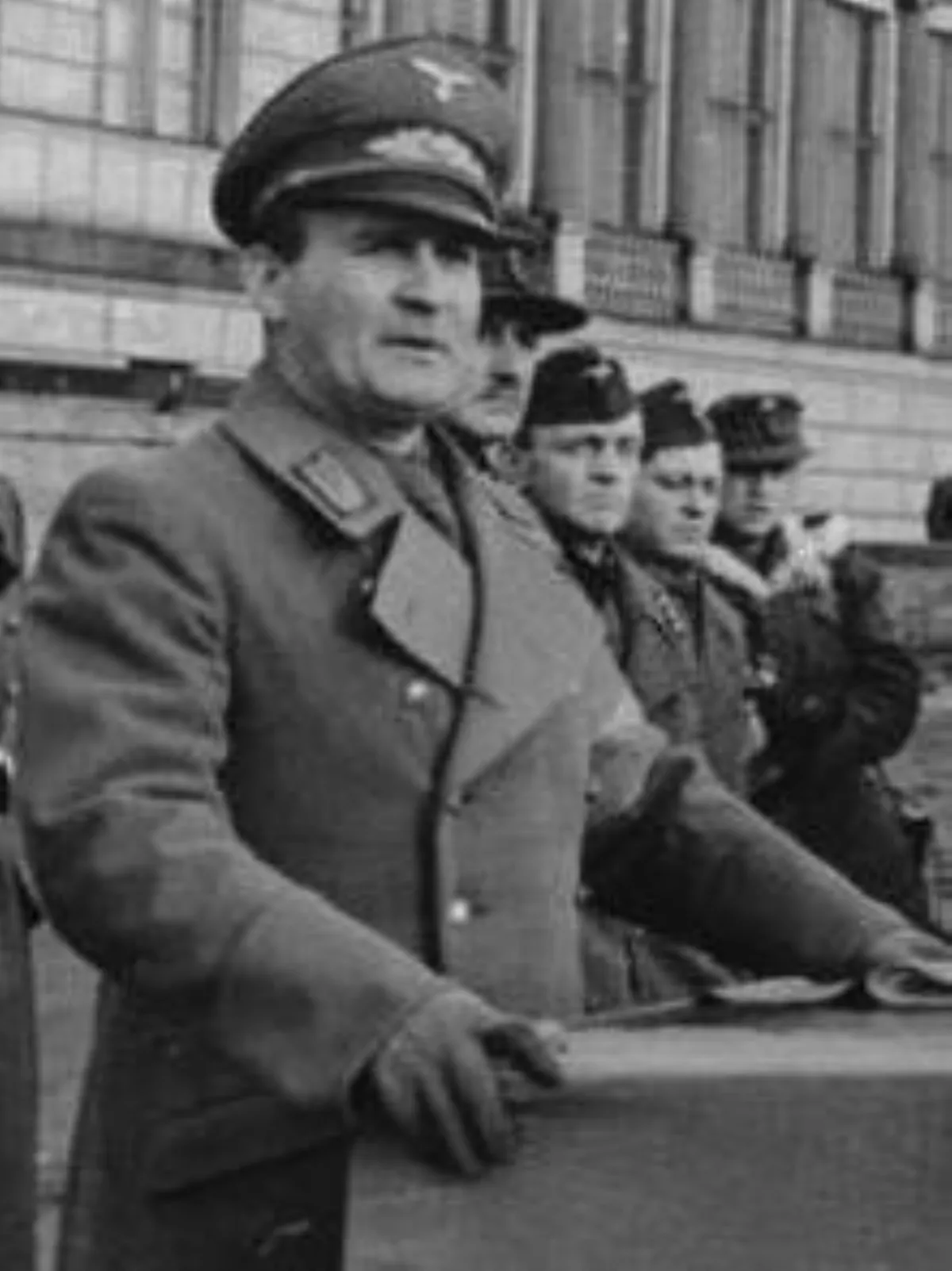 1.
1. Karl Hanke served as Gauleiter of Gau Lower Silesia from 1941 to 1945 and as Oberprasident of the Prussian Province of Lower Silesia.

 1.
1. Karl Hanke served as Gauleiter of Gau Lower Silesia from 1941 to 1945 and as Oberprasident of the Prussian Province of Lower Silesia.
Karl Hanke obtained an education as a milling engineer by attending the German Millers' School at Dippoldiswalde.
Karl Hanke then decided to obtain a year's practical experience as a railway workshop apprentice before returning to milling.
From 1921 to around 1926, Karl Hanke mainly worked in the milling industry, serving as a business manager for mills in the vicinity of Silesia, Bavaria, and Tyrol.
Karl Hanke later attended the Berufspadagogische Institut in Berlin, receiving a degree that qualified him to teach milling at vocational schools.
Karl Hanke joined the Nazi Party on 1 November 1928, with membership number 102606.
Karl Hanke began his career at the somewhat low level of Amtswalter, a low ranking speaker and factory cell organizer in Berlin.
Karl Hanke joined the Sturmabteilung Reserve in 1929; that same year he became a deputy street cell leader.
Karl Hanke was fired from his teaching position at the vocational school in April 1931 for his political agitation for the Nazi Party.
In 1932, Karl Hanke was made chief Gau organizational director and on 1 April 1932, personal adjutant and Referent to Goebbels in his capacity as propaganda director of the NSDAP.
Karl Hanke contracted Speer to convert a villa in the western suburbs into an office for the local party organization in 1932.
In 1944, according to Speer's book, Karl Hanke strongly advised Speer never to visit "a camp in Upper Silesia" for any reason.
Later in November 1932, Karl Hanke was elected to the German Parliament on the slate of the NSDAP, representing Potsdam.
Karl Hanke held this seat until the end of the war in Europe.
Karl Hanke again secured a task for Albert Speer in July 1932, having him build a headquarters for the Berlin NSDAP in the centre of the city.
Karl Hanke followed his boss there as his private secretary and aide.
At the time, Karl Hanke was a favorite of Goebbels and accompanied his boss on official visits to Italy and Poland.
On 15 February 1934, Karl Hanke joined the Allgemeine SS or general SS with membership number 203,103.
Karl Hanke was attached to the 6th SS-Standarte which was situated in Berlin.
Goebbels asked Karl Hanke to act as a mediator with Magda on his behalf, but things did not go well.
Karl Hanke spoke with Hitler as to the matter, who stated he would discuss it in private with Joseph Goebbels.
Karl Hanke did not subsequently return to his position at the Propaganda Ministry.
In July 1939, Karl Hanke was called up for military service, having previously obtained a reserve officer's commission in 1937.
In May 1940, sensing a good opportunity to further his career, Karl Hanke served under General Erwin Rommel in France with the 7th Panzer Division, 25th Panzer Regiment through June of that year.
Karl Hanke "got along" well with Rommel who appreciated good "public relations".
Karl Hanke was awarded the Iron Cross in Second and First Class.
Karl Hanke was discharged from the German Army in 1941 with the rank of 1st lieutenant.
Karl Hanke left active military service and in Breslau, Hitler appointed Hanke to the position of Gauleiter of the newly formed Gau Lower Silesia on 27 January 1941.
Karl Hanke was a fanatical enforcer of Nazi policy: during his rule in Breslau more than 1,000 people were executed on his orders, earning him the nickname "Hangman of Breslau".
On 16 November 1942, the jurisdiction of the Reich Defense Commissioners was changed from the Wehrkreis to the Gau level, and Karl Hanke remained Commissioner only for his Gau.
Karl Hanke had a long affair with Baroness Freda von Fircks in Breslau, the daughter of a wealthy landowner and University of Berlin lecturer.
Karl Hanke oversaw, with fanaticism, the defense of the city during the Siege of Breslau.
Karl Hanke had flown out the previous day in a small Fieseler Storch plane kept in reserve for him.
Eight days beforehand, Karl Hanke had been honored with the Nazi Party's highest decoration, the German Order, a reward for his defence of Breslau against the advancing Soviet Red Army.
Karl Hanke's ascendancy to the rank of Reichsfuhrer-SS was a result of Hitler proclaiming Himmler a traitor for his secretly-attempted surrender negotiations with the Western Allies.
Karl Hanke received word of his promotion on 5 May 1945.
Karl Hanke flew to Prague and attached himself to the 18th SS-Freiwilligen-Panzer-Grenadier-Division "Horst Wessel".
Karl Hanke chose to wear the uniform of an SS private, to conceal his identity in the event of capture.